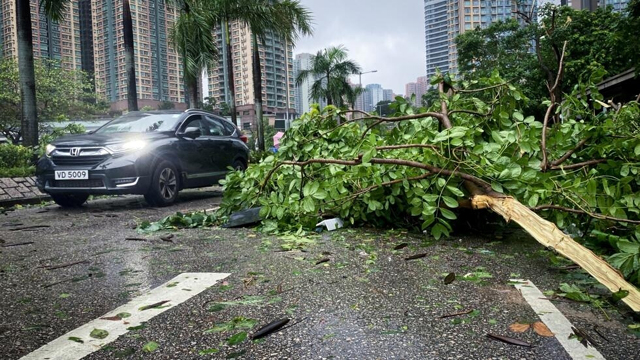
HONG KONG, China, Sept 2, 2023 (BSS/AFP) - Typhoon Saola swept across southern China on Saturday after tearing down trees and smashing windows in Hong Kong, although the megacity avoided a feared direct hit from one of the region's strongest storms in decades.
Tens of millions of people in the densely populated coastal areas of southern china had sheltered indoors on Friday ahead of the storm.
Saola had triggered the city's highest threat level in Hong Kong on Friday evening -- which had only been issued 16 times since World War II.
It was downgraded before dawn on Saturday after the typhoon passed the city, with no reported casualties, and tracked towards coastal areas of mainland China.
However authorities warned people to remain on alert, with strong winds and storm surges still a threat.
"Gale force winds are still affecting some places... precautions should not yet be relaxed," said the city's weather observatory at 8 am (0000 GMT).
Saola was still packing sustained winds of 145 kilometres per hour at its centre, creating a storm surge that caused rough swells around Hong Kong's waterfront areas.
The last time Hong Kong issued a T10 warning was in 2018, when Typhoon Mangkhut slammed into the city, shredding trees and unleashing floods, and leaving more than 300 people injured.
In mainland China, Mangkhut killed six people and impacted the lives of more than three million others.
But by Saturday morning, the damages to Saola in Hong Kong looked to be far less than Mangkhut.
AFP journalists in the city reported fallen trees, broken windows and solar panels pulled off rooftops.
Overnight Saola made landfall in the coastal area of Zhuhai in neighbouring Guangdong province, and is expected to weaken as it moves along the southern coastline.
China's national weather office had on Friday warned Saola "may become the strongest typhoon to make landfall in the Pearl River Delta since 1949", referring to a low-lying region that includes Hong Kong, Macau and much of Guangdong province.
Authorities had evacuated more than 780,000 people from high-risk areas, while eastern Fujian province saw more than 100,000 moved to safer ground.
Hundreds of flights were cancelled, businesses closed, and transportation in and out of the affected areas have been halted.